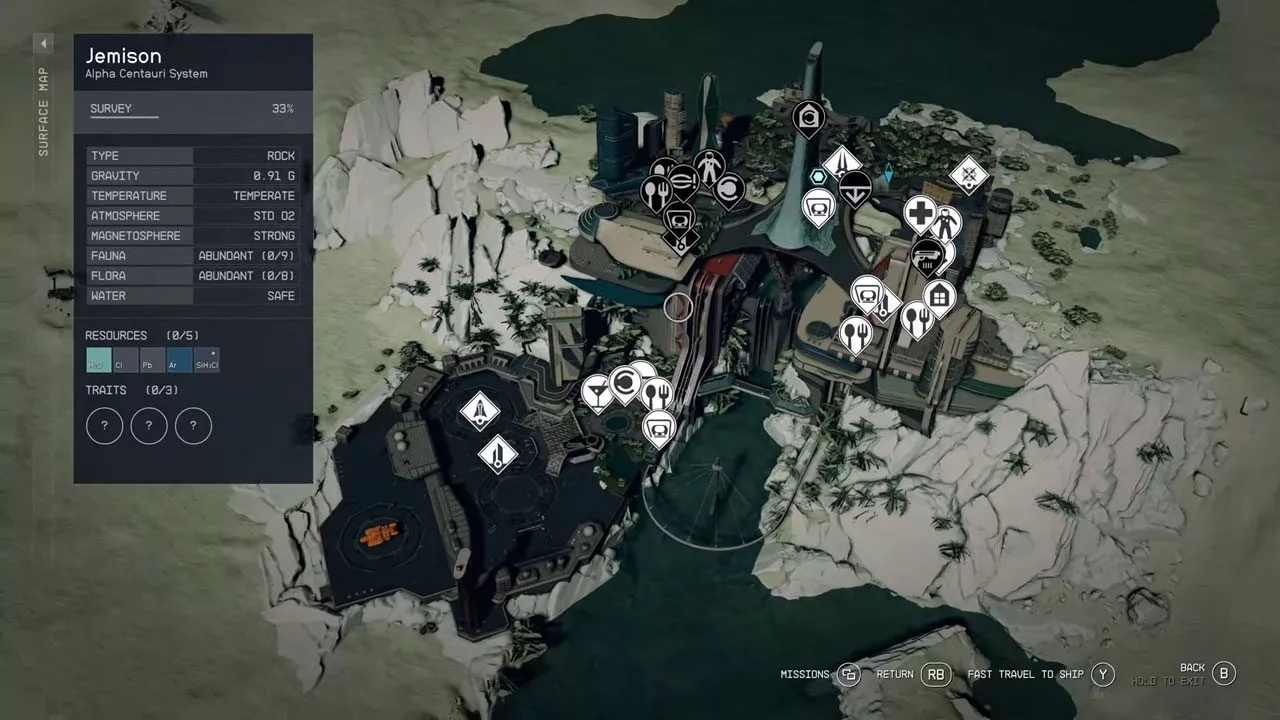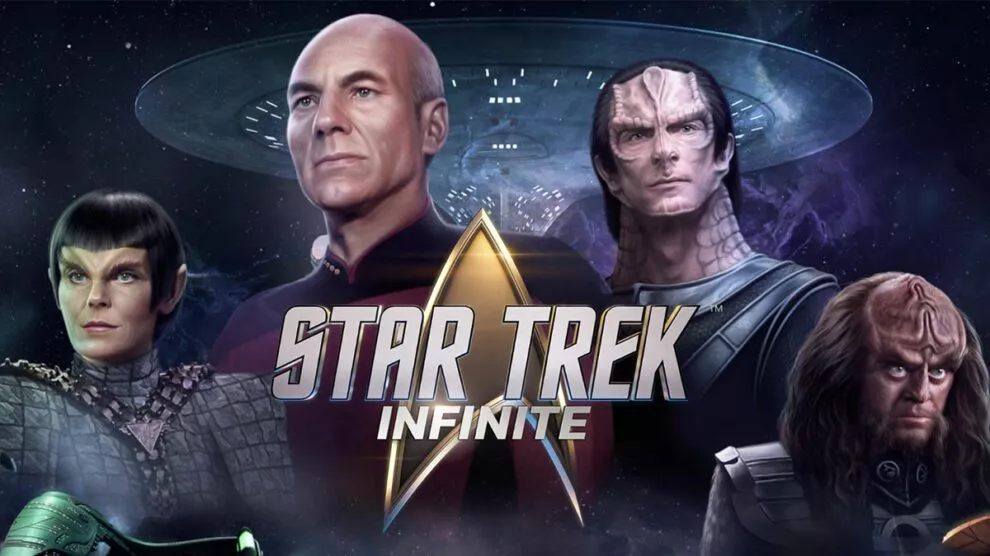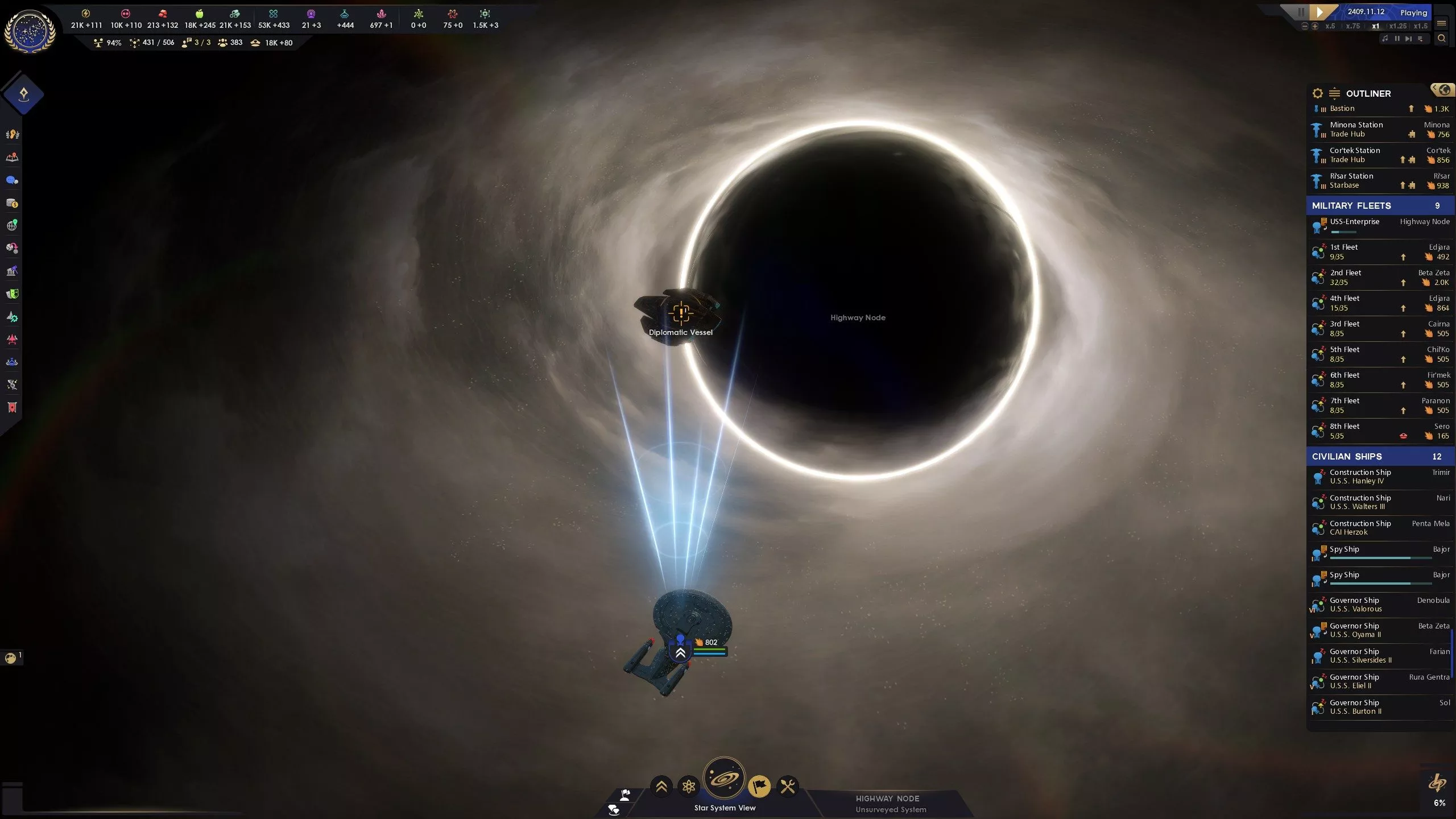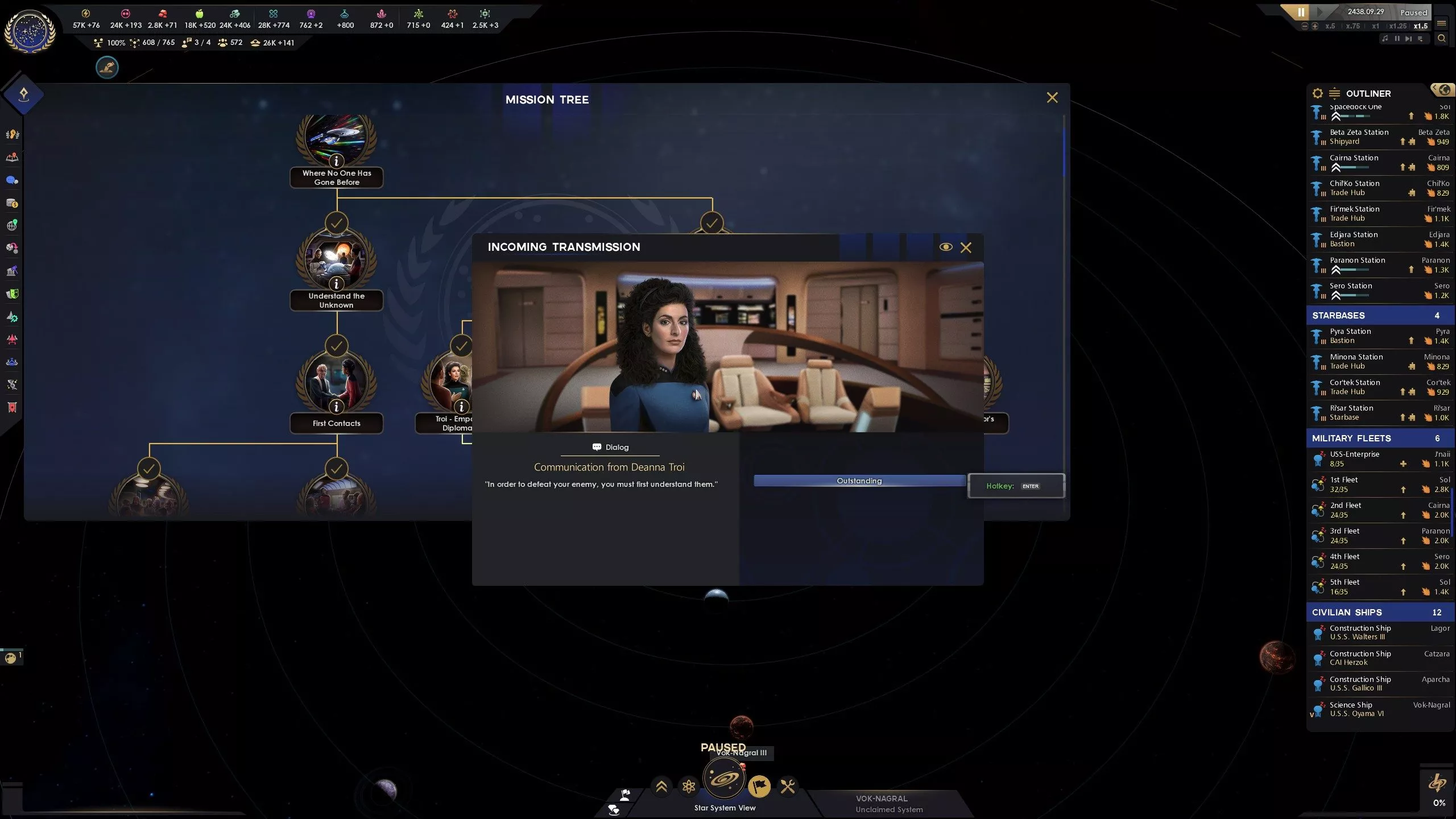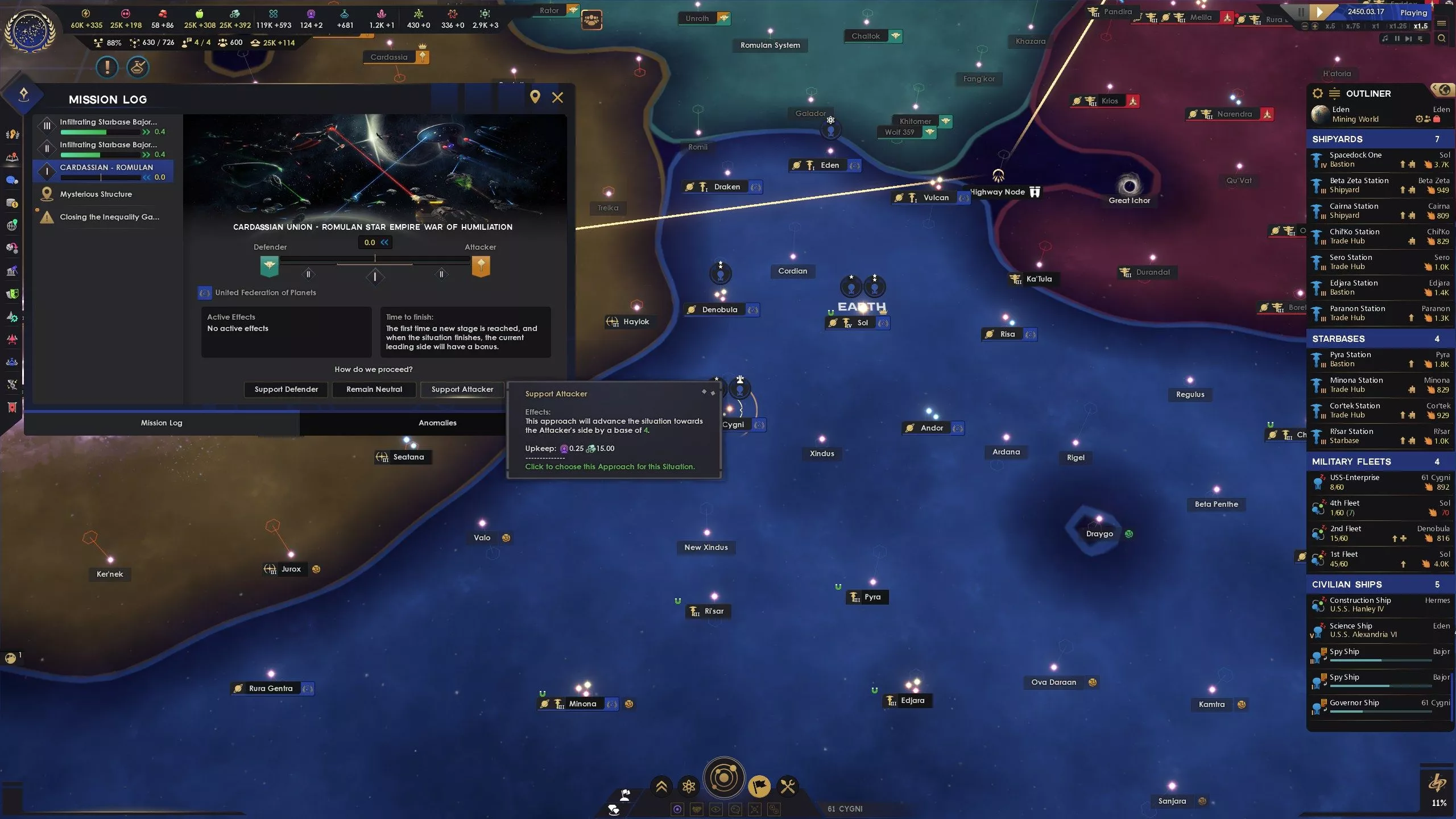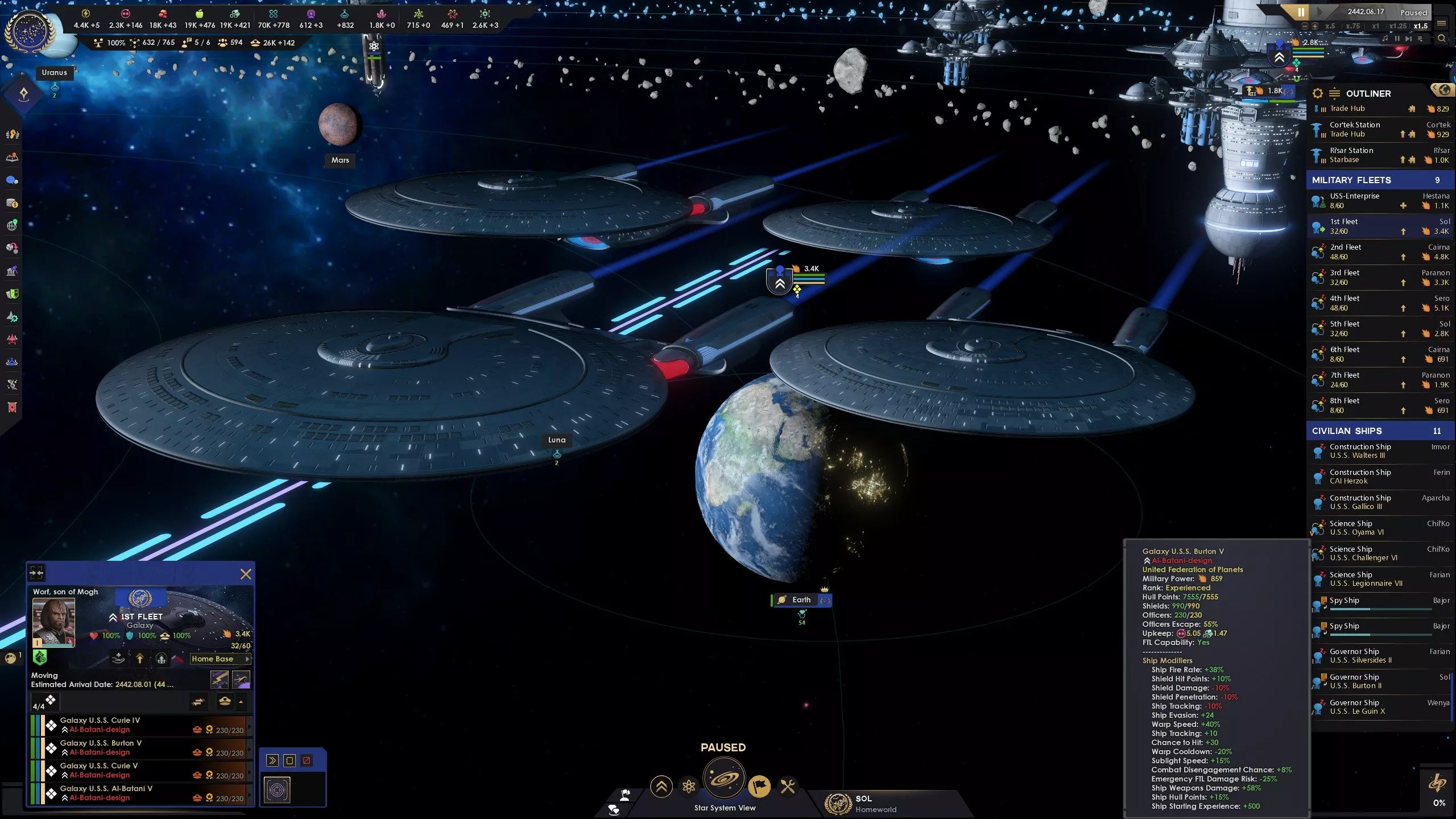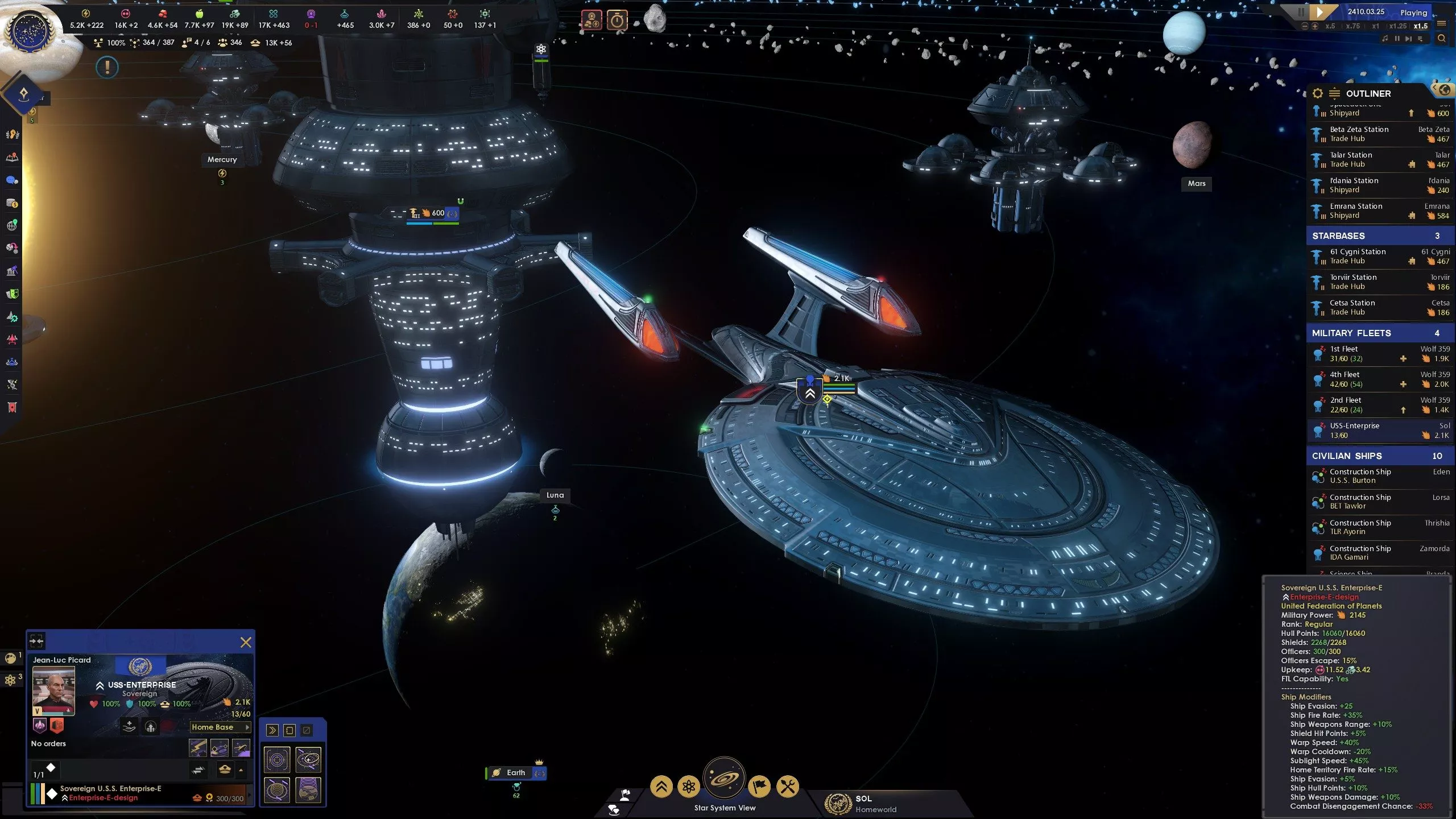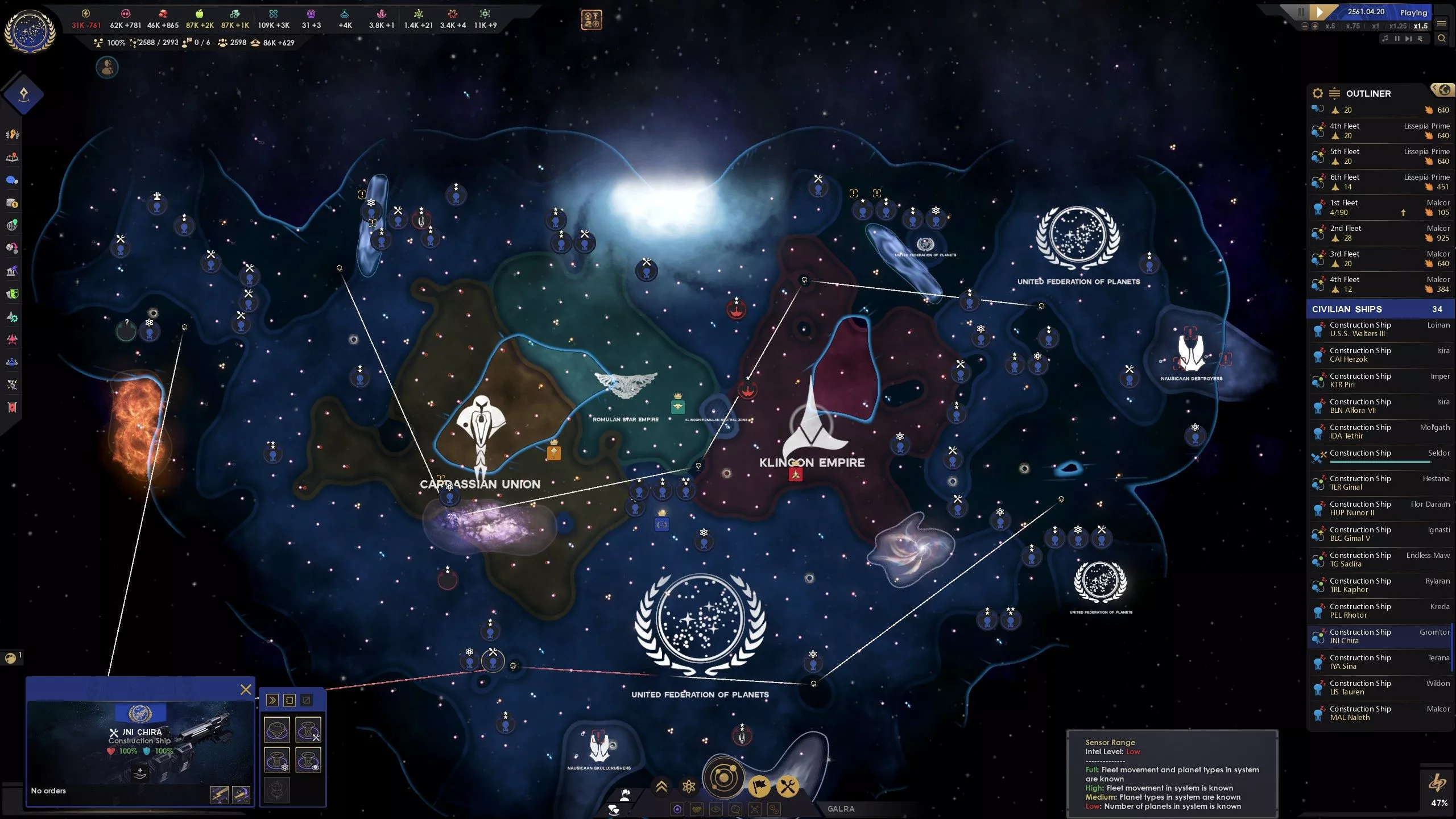Star Trek video game fans are having a great year.
I’m a huge Star Trek fan, but merely dabble in strategy games — that’s perhaps evident in my review of 2016’s Master of Orion, in which I felt it necessary to liken every instance of the game to my beloved sci-fi franchise.
With this at the back of my mind, I was cautious about Nimble Giant’s Star Trek Infinite before playing.
Case in point: I’ve heard nothing than great things about Stellaris‘ two big Star Trek reskins, but I struggled to get them up and running in a stable fashion. I purged the mods and thought I’d give Stellaris itself a go, and made it about five minutes in before feeling extremely overwhelmed.
Thankfully, that never was the case with Infinite. That may very well be due to the fact that this is proper Star Trek and I could use my existing knowledge to put things into place.
Here’s how it all comes together: to take a system and add it to your power — be it the Federation, the Klingon Empire, the Romulan Empire or the Cardassian Union — you’ll first need to use a science vessel to survey it, and then a construction vessel to establish a Starbase. Your survey will show you what resources are available, tied to planets and phenomena within the system; your construction vessel will be able to establish mining stations, research stations or observational outposts accordingly.
Combined with colonies that you can establish through simple colony ships or terraforming (unlocked via research), you’ll be able to settle worlds and continue to contribute to resource gathering. Planets can be tasked with providing military assets, ship- or settlement- building resources, a standard currency and more.
Playing as the Federation — which I did for four, day-long campaigns as part of this review — that’s the core of your mission. Explore, grow the Federation and live in unity. Seeking out new life and new civilizations, you’ll encounter new factions like the Trill and the Betazoids and engage in first contact procedures.
While the likes of the Cardassians could attempt to overthrow an existing regime and install themselves as the ruling power, the Federation seeks to peacefully integrate others into their growing collective. Doing so adds a Civic point to your tally; collecting 12 Civic points from various actions will mean your faction’s victory.
There’s far more complexity than that, of course. You’ll need to employ envoys to engage in diplomatic exercises with other civilizations, governors to warp around the galaxy aiding other civilizations and appeasing member societies, admirals in charge of vast fleets to protect your borders from Nausicaan pirates or overzealous warlords, and spies to gather intel on others or to stop uprisings attempted by rivals. In the lens of Star Trek, most actions just makes sense.
That said, not everything does. A mission log shows you specific actions that you need to take to properly progress; generally, that includes what you actually need to do. For instance, as you encounter an unknown species with a penchant for geometrically-pleasing ships on the outskirts of the galaxy, you’ll straight up be told you need to dispatch three military ships alongside a science ships. One specific solar flare event, however, still has me scratching my head; I’d assume science ships would be required to investigate, but I still have yet to complete it.
The same is true for the poor, beleaguered Bajor system. In some games — and mirroring the years before Star Trek Deep Space Nine — it’s a minor power under control of the Cardasssians. In others, it’s straight-up Cardassian. No matter what I try, be it diplomatical outreach or outright war, I cannot liberate the damn place.
It’s war that confuses me; despite having a formidable force of California-, Intrepid-, Miranda-, Defiant-, Galaxy- and Sovereign-claas ships (as the Federation, of course) and stomping anyone that decides to defy me, I never win a war properly.
Despite having a presence in each system of an opponent’s systems, war fatigue means I’ll lose. A way around that is to to go for a peaceful solution — either leaving systems in the control of their original power or asking for a neutral zone to be established between factions — but that means I’ll never own Bajor either.
The only way I think — and that’s the operative term there: think — I could take Bajor is to wait for the Cardassians to declare war on the Federation or an allied faction, and then cheekily make a defensive claim on the system. That’s playthrough five, I guess.
On top of some simple confusion, Infinite either experiences glitches the longer a game runs, or just does a poor job of explaining what’s going on. One year away from the conclusion of the game, and my science ships have, for some reason, stopped automatically surveying systems. It’s not that my ships aren’t staffed or unsurveyed systems exists — because Infinite does tell you that — it’s just that my science ships won’t do it.
In the same game, I’ve also reached 10 Civic points by convincing a number of races to join the Federations, but the remaining two simply will not join us despite what they say is a clear intention to. The races aren’t under the control of another power and they’ve agreed to Federation membership in principle, but I receive a little failure message in the top-left in the game when I try to seal the deal. I also don’t fully understand what constitutes a Civic point — and despite sitting on 10 and being told I’d win if we get to the last date playable, the Romulans suddenly swooped in and beat me because… they were better at diplomacy? I don’t get it.
Researching has the same problems; I’ve encountered the same projects on multiple occasions, wondering why they’d appear if I’ve already engaged them. A number of critical missions involve specific research to have been performed, and I’ve no idea how I’d ever get to those projects apart from pure, dumb luck (and timing so they’ve been performed before I need them).
There’s also some stuff that just isn’t Star Trek — ship classes are broken down into designs, so an Intrepid isn’t really an Intrepid and an Enterprise-E is a Sovereign but not because it’s truly an in-game hero ship. Worse yet, ships honouring a previous ship to bear the same name do so using a Roman numeral designation (Resolute II) rather than the alphabet (Resolute-A). It’s such a little thing, but it’s extremely distracting if you’ve lived and breathed the franchise for so long.
Despite these issues, Star Trek Infinite is a glorious strategy game just dripping in canon and nostalgia. I love it sometimes — and hate it in others — but I’ll be damned if it hasn’t taken up my thoughts during most waking moments as I sit pondering how to better deal with the Nausicaans, integrate Bajor or fight the Borg.
Coupled with the likes of Star Trek Resurgence, a narrative adventure also released this year, it’s safe to say that Star Trek video game fans haven’t had it this good in a long damn time. If you’re a strategy fan, you’ll enjoy this, and if you’re a Star Trek fan you’ll absolutely gobble this up. As well you should.
Expect Star Trek Infinite on Windows PC and Mac from today, 13 October. And if you’re so inclined, Star Trek Resurgence is currently on Windows PC via the Epic Games Store, Xbox One, Xbox Series S, Xbox Series X, PS4 and PS5. We reviewed the title here and went in for an in-depth interview with Dramatic Labs about it here. Make it so.
Star Trek Infinite was reviewed using a promotional code on Windows PC via Steam, as provided by the publisher. Click here to learn more about Stevivor’s scoring scale.
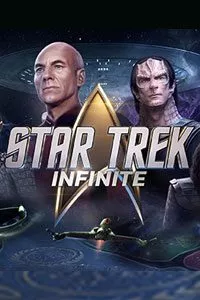 |
Star Trek Infinite13 October 2023PC Mac |
This article may contain affiliate links, meaning we could earn a small commission if you click-through and make a purchase. Stevivor is an independent outlet and our journalism is in no way influenced by any advertiser or commercial initiative.




